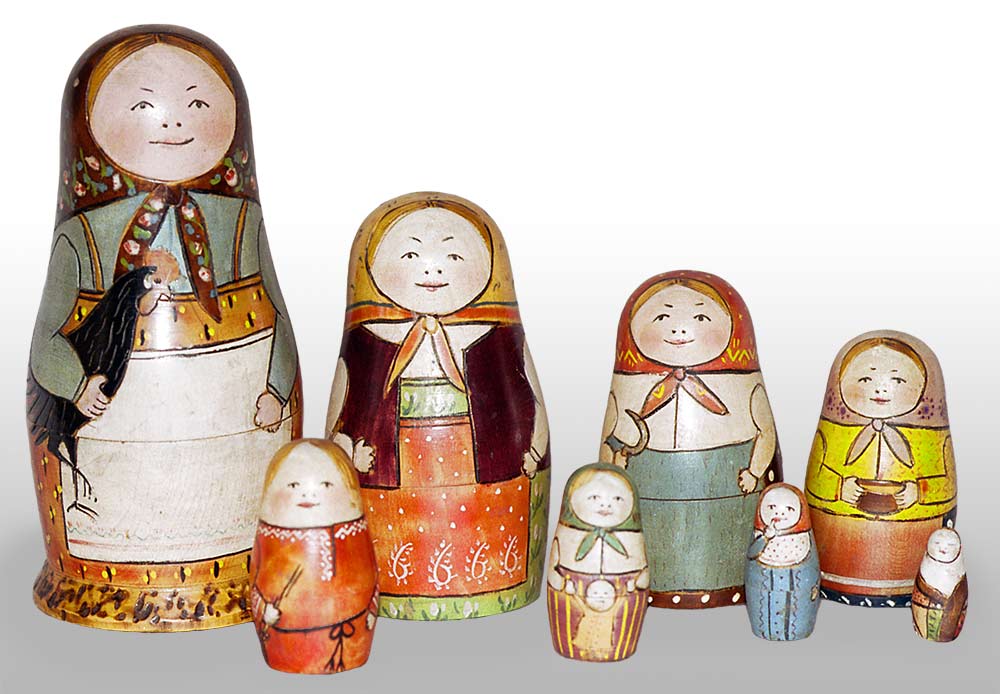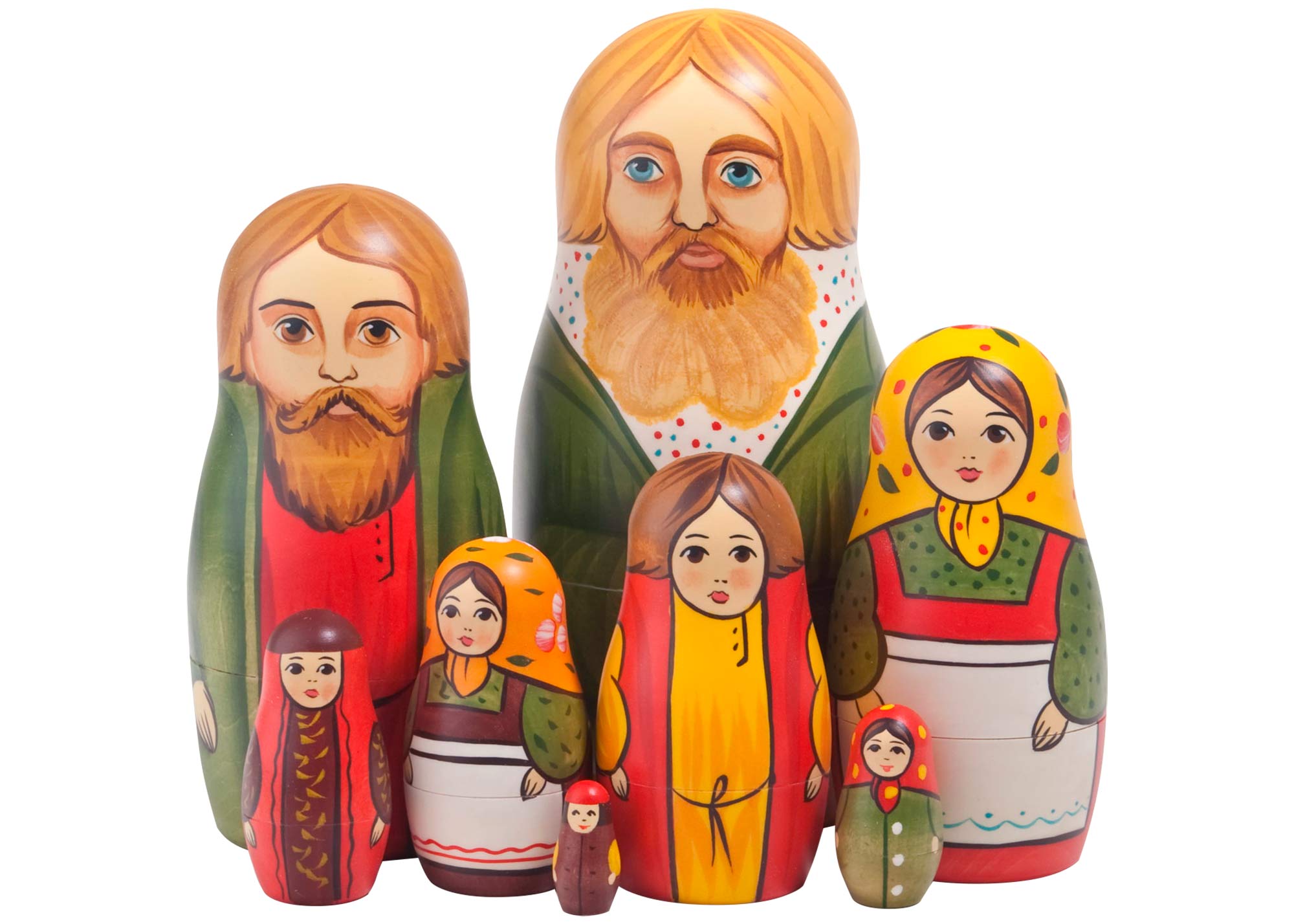Preserving Russia's Past:
The History of the Russian Nesting Doll
By Amy V. Lewis
It is difficult to believe that the nesting doll, what some might consider the embodiment of Russian culture, was just born some 100 years ago. Nesting doll history began in the 1890s. The smoke and noise of Russia’s industrial revolution inspired a romantic notion: Was the key to peace and harmony a simpler way of life? Artists turned to Russia’s peasantry for the thread that would unite the country with its past.
The country was no stranger to woodworking. Russian craftsmen had been producing nesting toys such as Easter eggs for several years, but the appearance of the nesting doll remains a bit of a mystery. She was created at the Children’s Education Workshop-Salon in Abramtsevo, a toy company founded by patron of the arts Savva Mamontov. Some say the idea was inspired by a nesting toy featuring the Seven Gods of Fortune that Mamontov’s wife brought back from a trip to Japan. Others insist that the doll was a result of the workshop’s constant demand for new products and was of the artists’ own invention. The memoirs of one of the era’s most esteemed lathe operators, Vasilii Zvyozdochkin, make no mention of the Japanese toy. However, he does describe an attempt to create a solid wooden doll at the Children’s Education Workshop-Salon, writing that he and his colleagues decided their creation would be more interesting if the doll were hollow and had more toys hidden inside of it.

Whatever the case, the result of their efforts was the very first nesting doll, The Rooster Girl. She came from the Russian countryside bearing a black rooster and dressed in a kerchief and work apron. The wooden doll was hollow on the inside and could be opened up to reveal a second doll. This doll held another, which held another, and another, until a seemingly endless number of siblings had emerged from within the first. Each child carried an item telling of peasant life: a basket, a sickle, a bowl of porridge, a broom, and a younger brother in tow. Nestled in the center was a baby swaddled in a patchwork quilt: hope for the future in the promise of generations to come. They named her Matryoshka, or “little mother.”

The art form caught on quickly. In 1900 one of the Russian wooden dolls was taken to a show in Paris, where it received an award. After such a favorable introduction, many artists and lathe operators began to devote their time to making matryoshka dolls. Zvyozdochkin, himself, dedicated the rest of his life to teaching others the carving aspect of nesting doll production. The nesting doll shape and concept became a canvass for renderings of political figures, illustrating Russian fairy tales, creating religious icons, and much more. Virtually any image one could imagine can be adapted to its versatile shape.
The world has seen many changes in the past century, but the nesting doll has remained very much the same, harkening us back to a simpler time. Many are committed to ensuring that this is one tradition that won’t fade into obscurity, including one company, Golden Cockerel Crafts. Jointly located in Boone, North Carolina and St. Petersburg, Russia, Golden Cockerel is striving to ensure the survival of the nesting doll, Russia’s past and the cottage industry.
A 1,500 mile bike ride from the former West Germany to the Soviet Union in the summer of 1991 was the road to a career for Walton Conway. Living amongst Russia’s economic hardships following the fall of communism inspired him to help. He returned to the United States in 1993 to take a teaching job at North Carolina’s Appalachian State University, a suitcase filled with nesting dolls in tow. It was the hope of Conway and his friend and newfound Russian business partner, Roman Karkachev, that they could provide aid to struggling Russian artists through their burgeoning craft import business. Golden Cockerel began with Conway selling the dolls out of his basement. Fourteen years later, the company has outgrown the small space and is now comprised of an adjoining warehouse and gallery.
The dolls sold by the company are still produced in the same way they were in the 1890s. The linden wood is cut, stripped, and carved without the aid of modern day machinery. Each doll is painstakingly painted by hand. Some are made in homes where women apply blush from their own makeup kits to their nesting dolls’ cheeks. Others are made by professional artists at Golden Cockerel’s St. Petersburg art studio. The pieces are then boxed and shipped to North Carolina, where the American side of the business deals with marketing and selling the finished product. Thanks to the internet, Golden Cockerel fills orders for nesting dolls every day from all over the world.
By expanding the craft market beyond Russia’s borders, they are preserving the art for years to come.